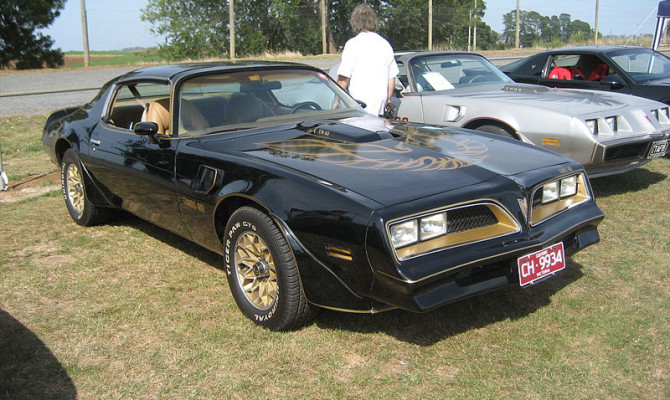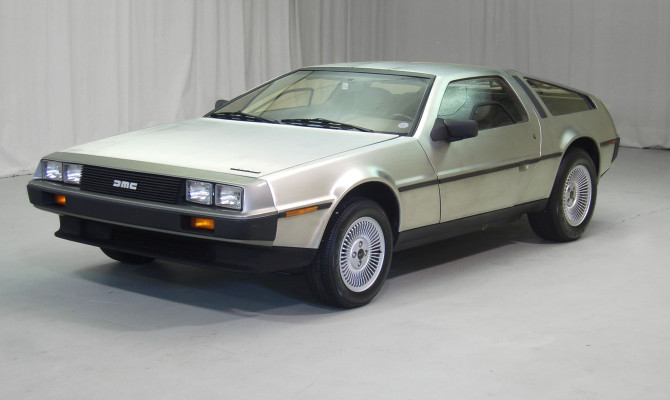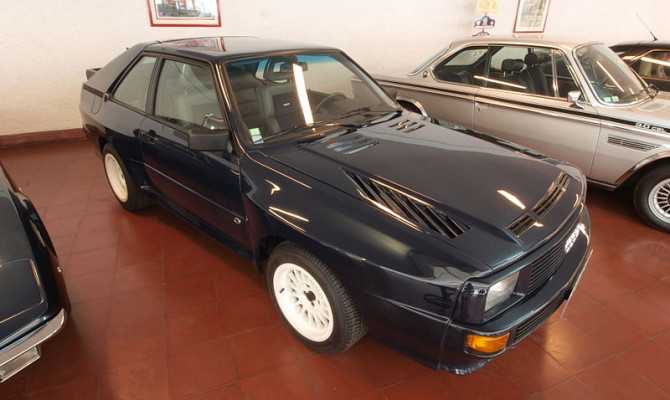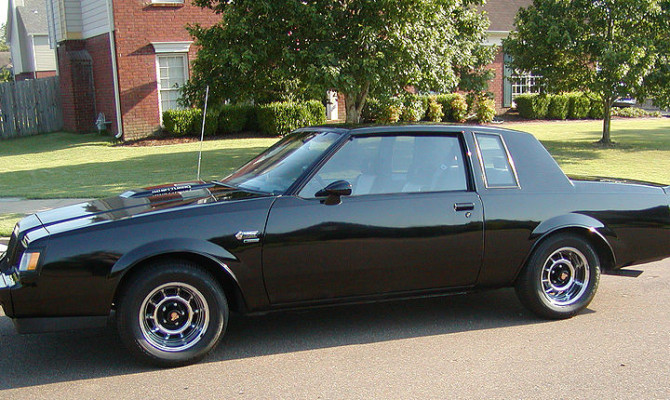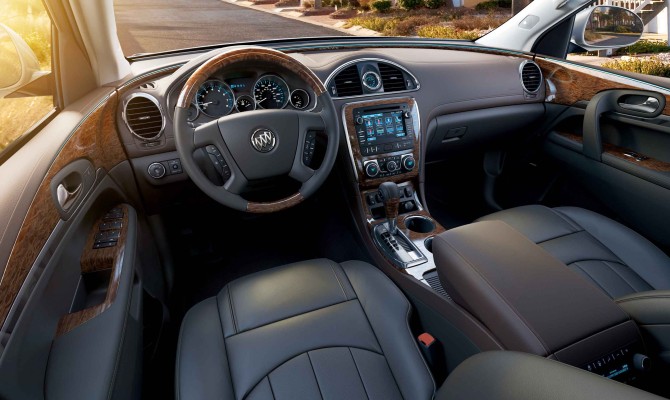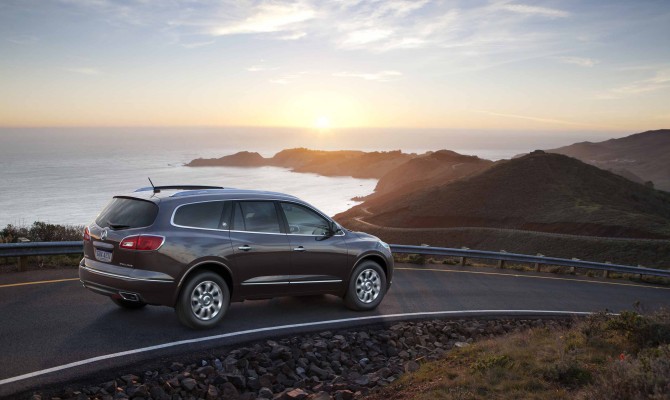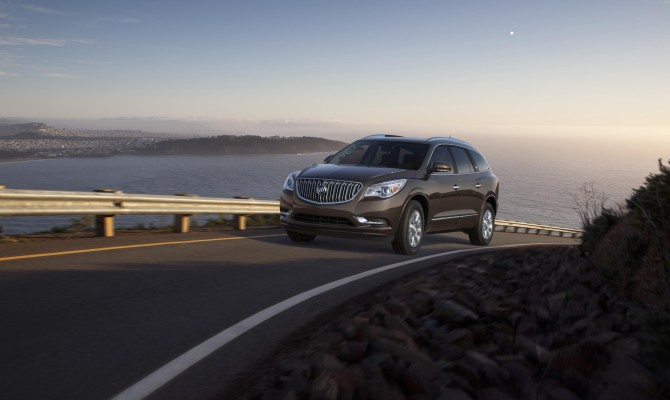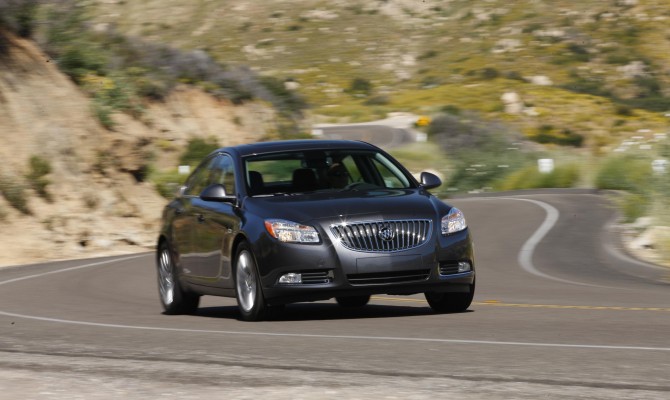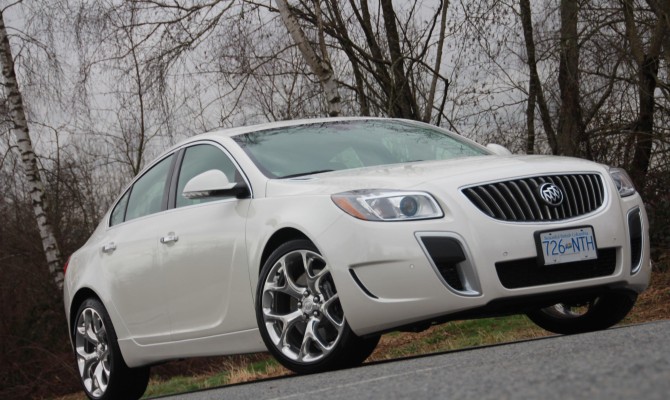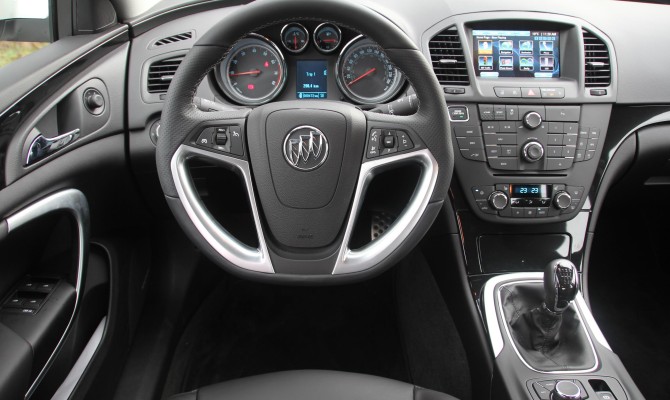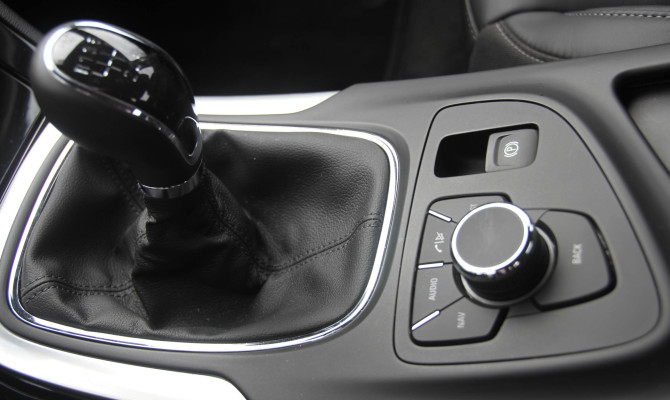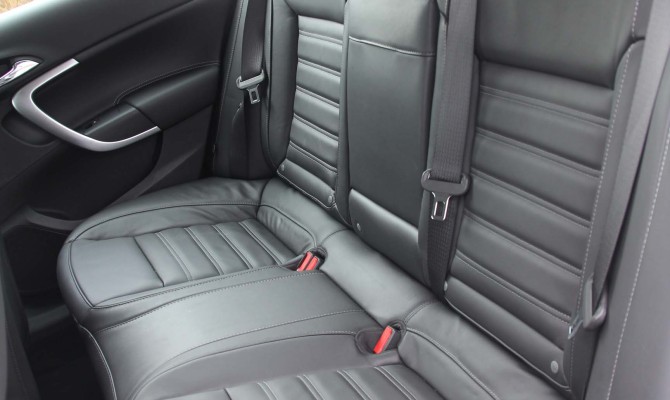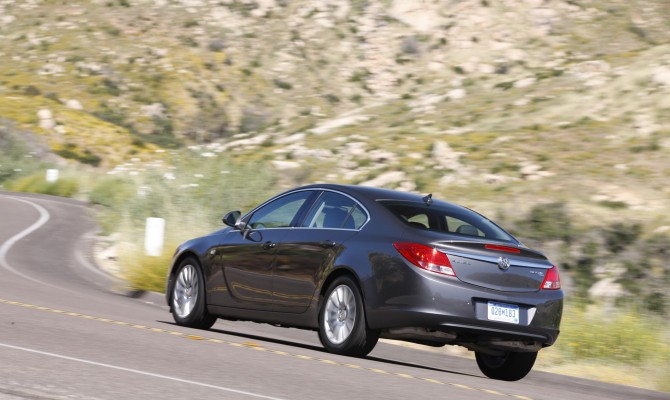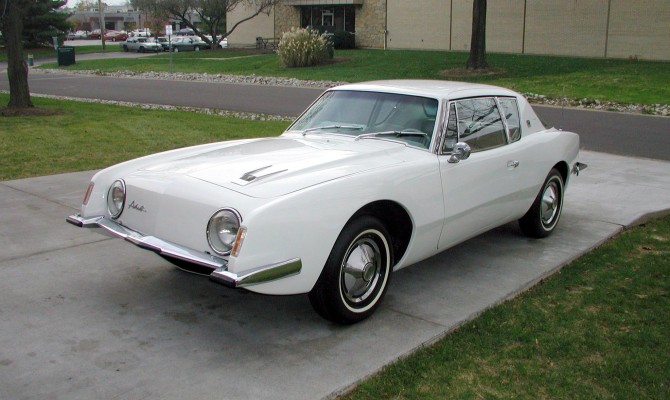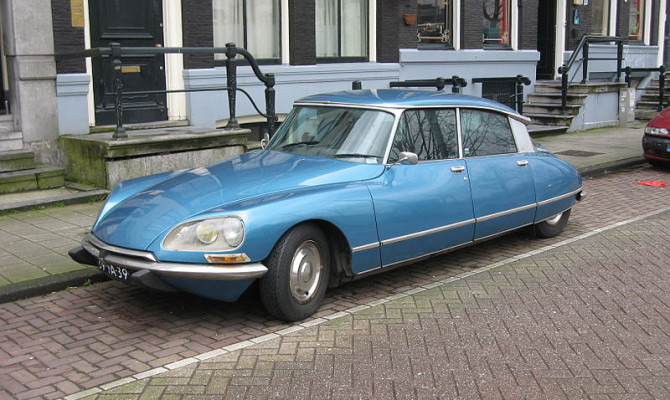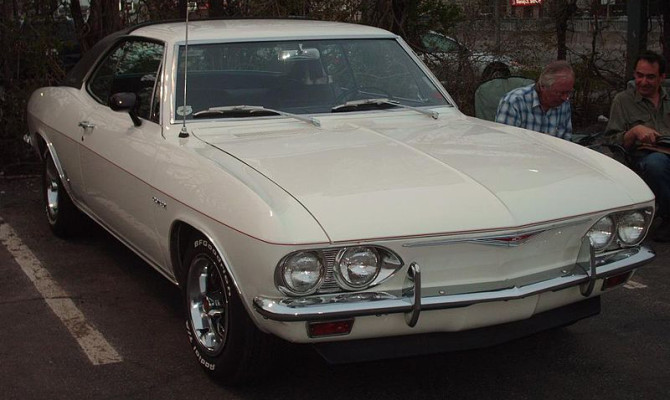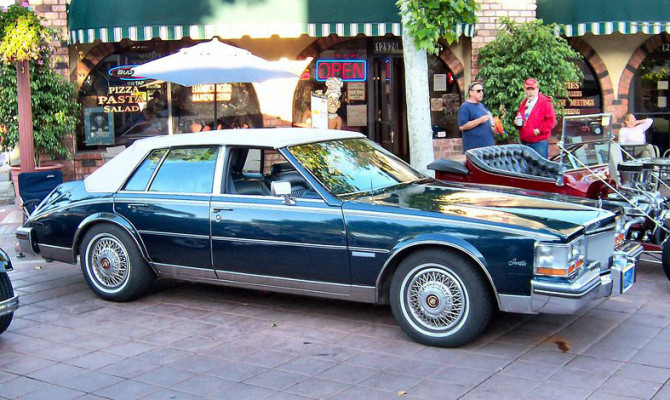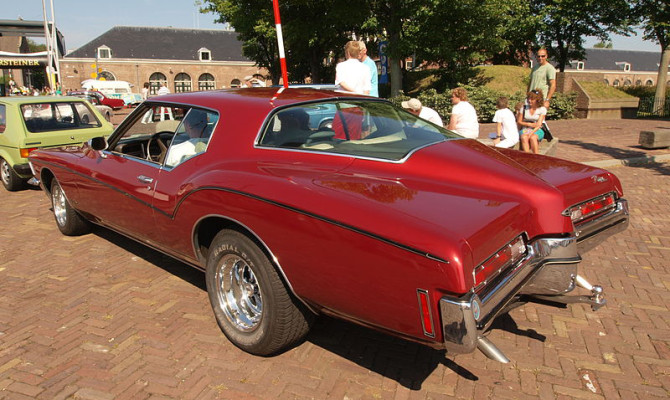“Now that America is going to be great again, power is the only thing that matters and the Envision revs.”
GM say the brand has grown quickly with female buyers, and one in two Buick customers today are coming from competitors.
(more…)
by Grant Stoecker
The ‘Malaise Era’ was the antithesis of the muscle car heyday that existed merely a year before its start in 1973.
It was a dark period characterized best by underwhelming engines, EPA restrictions, and questionable styling. In the Malaise Era you could run your new Cobra through the gears without raising the attention of local law enforcement. The Malaise era wasn’t without hope, and the era saw production of a few diamonds in the rough. Here are our picks.
1. 1977 Pontiac Firebird Trans-Am Special Edition
Call it the Burt Reynolds Effect, but the 1977 Trans-Am is still a kick-ass ride. Featured in 1977’s top grossing film, Smokey and the Bandit, the black and gold Trans-Am had as much star power as the moustachioed Reynolds.
The power for the T/A came from a 6.6 litre V8, producing a disappointing 200 horses for 1977, a far cry years prior. It didn’t seem to matter as you cruised down main street, however, T-Tops in the trunk and blasting Journey through the 8-track. The menacing looks of the Trans Am seemed to be more than supple to erase any memory of the days of muscle car past, as other drivers stared in awe from the seats of the latest econo-box.
2. 1981-83 DeLorean DMC-12
The DMC-12 was the car from the future that no one had asked for, but everyone wanted.
Built by an automotive dream team consisting of John DeLorean, Colin Chapman, and Giorgetto Giugiaro, the DMC-12 was built to be a futuristic luxury coupe with a 200 horsepower Wankel rotary engine and price of $12,000. Execution of the concept missed the mark, and the production DMC-12 drew its underwhelming 130 horsepower from a Renault 6, and was sold for $36,000.
Despite this, the DeLorean secured its spot in the hearts of people around the globe as Doc Brown’s time machine in the 80’s mega-franchise, Back to the Future. If only they had come stock with the flux capacitor.
3. 1983-86 Audi Quattro
Germany continued to make fast cars throughout the malaise era, such as the BMW M1 and Porsche 930, but Audi created a completely new segment of car with the introduction of its all-wheel drive performance car, the Audi Quattro.
The Quattro was originally introduced to the European marketplace in 1980, but did not make its way stateside until 1983. With power from its turbocharged five-cylinder going to all four wheels, the Audi Quattro became a rally car legend, and the production models looked the part with its noticeable fender flares, Audi graphics, and BBS alloy wheels. The car was a head of its time, and only 664 were ever sold in the US before Audi discontinued it stateside in 1987.
4. 1974-76 Bricklin SV-1
Canada’s primary contribution to the malaise era was the brainchild of American millionaire Malcolm Bricklin, who dreamt of making the world’s safest sport car, naming his creation the Safety Vehicle One, or SV-1. The SV-1 had a smattering of safety features ranging from an integrated roll cage to safety bumpers, and even lacked an ashtray to discourage drivers from smoking. The Bricklin was powered by an AMC or Ford V8, and was rated favorably at the time against its competitor, the Corvette. Despite initial reviews, the car was notorious for poor build quality, and the engine was prone to overheating due to its small radiator. Bricklin went into receivership in 1976, and the SV-1 was dead in the water.
5. 1987 Buick Grand National/GNX
The Buick Grand National was not your grandfather’s Buick. Often referred to as Darth Vader’s car due to its all black paint scheme, the Buick Grand National was powered by a Turbocharged V6, and was rated for only 245 horsepower. The Grand National Experimental, or GNX, was the baddest of the Grand Nationals, and after rolling off the production line, it was sent to the mad scientists over at McLaren Performance, who modified the engine to be able to run 0 to 100 m/h in a mere 4.3 seconds, a figure impressive by modern standards.
Grant Stoecker writes for Hagerty Insurance. Hagerty is the world’s leading specialist provider of classic car and boat insurance. Learn more at hagerty.ca
“Post-war cars that swam against the stream of fins, scoops, chrome and decals and were memorable for their elegant simplicity…”
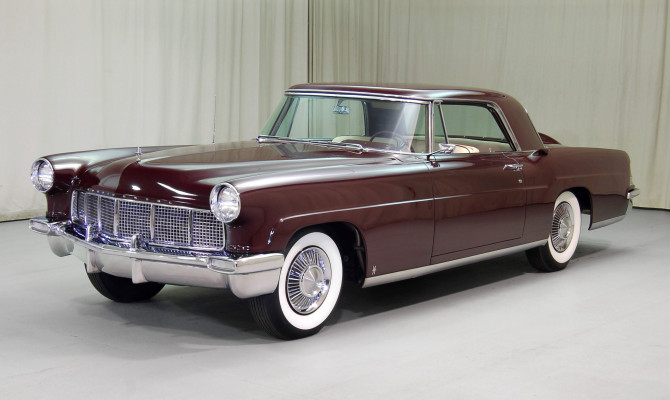
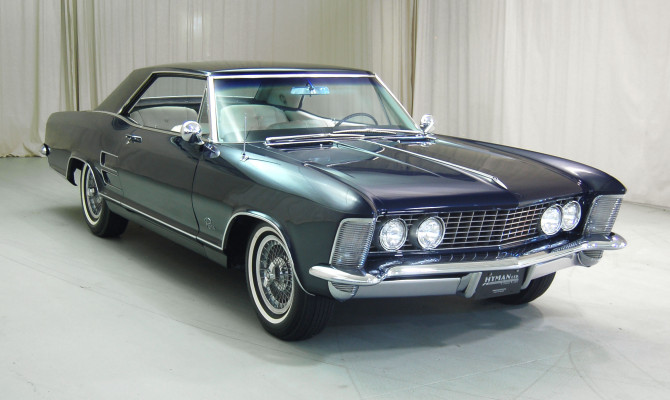
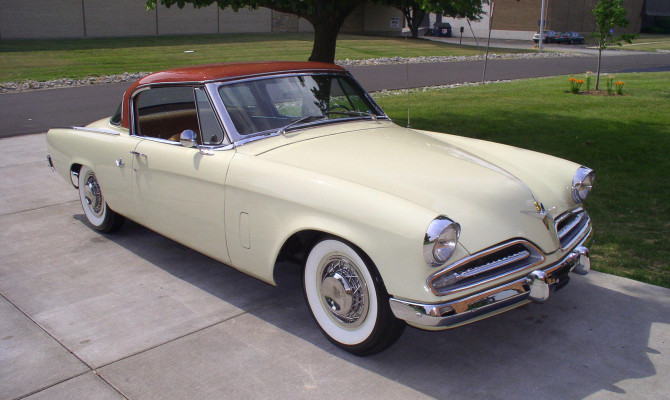
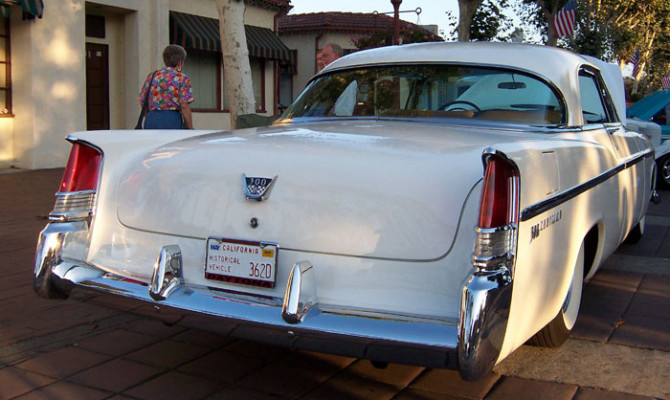
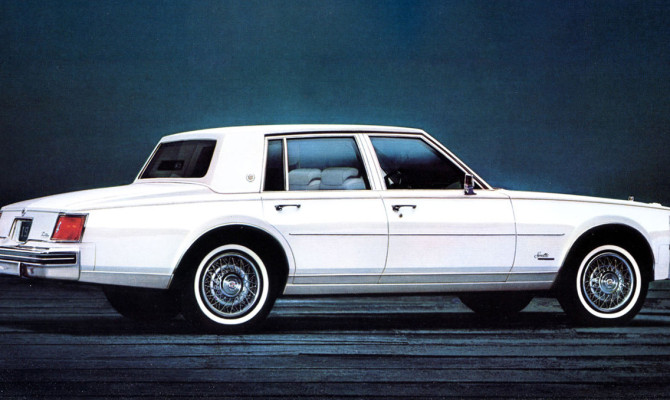
Poet Henry Wadsworth Longfellow famously wrote, “In character, in manner, in style, in all the things, the supreme excellence is simplicity.”
And one could argue that the same is true in automotive design. American car design of the 1950s-1970s was beloved for its flamboyance; here are the best from that bunch of years…
1963-65 Buick Riviera
The 1963 Riviera was the result of GM design head Bill Mitchell’s desire to produce something that was a combination of a Rolls-Royce and a Ferrari. Whether he succeeded in that odd mash-up is debatable, but the 1963-65 Riv was a thing of great elegance and simplicity, particularly the 1965 model with hidden headlamps.
Introduced at the height of Camelot, it was as elegant as Jackie Kennedy.
1956-57 Continental Mk II
The Continental was emphatically not a Lincoln, even though it shared the name of numerous products of that division of the Ford Motor Company. For two brief years, Continental was a division unto itself and the Mk II may well have been the most elegant post-war car built in America. Costing the then-unheard-of sum of $10,000 (the equivalent of almost $87,000 in today’s money), the care and craftsmanship that went into each car ensured that Ford still lost money on each one.
Elvis, Frank Sinatra and Elizabeth Taylor were all Continental owners.
1953 Studebaker Regal Starlight coupe
Famous industrial designer Raymond Loewy put together a team of talented designers that included Robert Bourke to design a car like no other of the 1950s. Low, sleek and incredibly elegant, the Regal Starlight is largely forgotten today by all but the most diehard car collectors and fans of the long-defunct Studebaker Corporation of South Bend, Indiana.
1975-79 Cadillac Seville
In a decade not necessarily known for elegance (heaven knows how many high school kids rode to prom in dad’s Seville wearing powder blue polyester tuxedos), the Seville stood out against the odds as a particularly elegant design. Not only was it handicapped by being a product of the 1970s, but it was the first time that a substantial number of Chevrolet components were used in a Cadillac (it shared the same underpinnings as the Nova). But this was no Cimarron. The first-generation Seville was elegant, restrained and every bit a Cadillac. Although it was the smallest car in the lineup, it was the most expensive and it looked the part.
1956 Chrysler 300B
The first of the 300 “letter-series” (the 1955 C-300 was never actually called the “300A”), it was probably the prettiest Mopar design of the 1950s. Its pillarless hardtop design and restrained use of chrome were wildly inconsistent with the over-the-top performance that the car was capable of delivering from its 355-hp, 354-cubic-inch Hemi V-8. It terrorized NASCAR back in the day.
Rob Sass is the vice-president of content for Hagerty Insurance. Hagerty is the world’s leading specialist provider of classic car and boat insurance. Learn more at hagerty.ca
The Enclave is designed to be a stylish people mover and it definitely achieves that goal…
While most auto manufacturers provide option lists as long as your arm, the 2014 Buick Enclave provides many luxuries as standard equipment.
Particularly appreciated by yours truly on an extended test drive were the perforated leather seats that conform to your body and provide comfort and warmth via easily accessible heater/air conditioning buttons. I found the Enclave to be very comfortable and the cabin to be very quiet, in fact there was little if any road noise.
Seating for seven with an option for eight, gives riders plenty of room and all seats are very comfortable. The second seats slide forward easily thanks to ‘Smart Slide’, enabling quick access to the third-row seating area. With the pull of a lever, the cushion flips up while the seatback slides forward. The system can be adjusted to provide more legroom either for those in the second row or third.
I should also note the ice blue LED light strip that envelops the entire inside of the vehicle at night, forming a chest high ring of light. Might be ok if you’re a fan of the movie Tron, but I found it a bit distracting. Moving on . . .
The Enclave features enough technological upgrades to excite any techno savvy person. The Buick IntelliLink system is an interactive audio system that enables you to access music and apps from your smartphone. It also offers a voice to text system to discourage the temptation to glance at your smartphone while driving. I used the system extensively and proved to be a real winner.
Many safety features are available with this vehicle including rear cross traffic alerts that help you detect vehicles as you are backing up. There is also an available side blind zone alert that uses radar to identify a vehicle traveling in one of your blind spots. In additional to all the usual airbags, Buick has introduced an industry first driver’s seat side mounted front centre airbag. It provides cushioning between the driver and front passenger in side impacts.
Nice weather encouraged me to take a trip to Whistler along the Sea-to-Sky highway. I have always enjoyed that highway with all the twists and curves. The Enclave was a little sluggish on the hills but overall it handled very well.
The tester had a 3.6-litre V6 engine, which generates 288 horsepower, is mated to a six-speed automatic transmission and offers direct injection with variable valve timing. The all-wheel drive system detects wheel slippage and delivers power to the wheel to give you it the best grip.
The highway fuel consumption is rated at 8.4 L/100km (12.7 – city), but I was getting about 8.9L/100km on my trip. The actual numbers are 12.7/8.4 L/100 km (city/highway)
I’ve left the looks until last because the major changes came in the last model year so differences are only subtle. It does now have a noticeable splash of LED accent lighting over the headlights.
The Enclave is designed to be a stylish people mover and it definitely achieves that goal. Overall, it was a nice driving experience and with a few changes, it could be a more attractive one too.
Price as tested $51,545.
Regal’s crash test performance was also outstanding and earned it a “top safety pick” rating…
The all-new 2011 model year edition of Regal was built in Germany and based on a rigid Euro-car chassis, and could be ordered with a turbocharged engine and had a driver-selectable suspension system.
It would also be the first Buick to offer a manual transmission, since the 1980s. Not since the days of Grand National, a big engine rocket, last produced in 1987 (and still cherished by Buick enthusiasts), had we seen a hard-core sports version of the Buick Regal. Yet, this Regal is a very different beast. While it may not possess the awesome straight-line power of its ancestor, it’s a hoot to drive for different and probably better reasons.
It was based on the German designed Opel Insignia, which was the 2009 European Car of the Year. The 2011 Regal was made in Germany but then (2012 and on) all production was switched to Oshawa, Ontario.
The overall design profile of this Regal is coupe-like, even though it has four doors. Up front, there’s a modern version of Buick’s traditional “waterfall” grille and an extra-large version Buick’s tri-shield emblem.At the rear, the sloping roofline connects to a short deck with distinctive and large wrap-around taillights.
The turbo engine versions of Regal should definitely be on the checklist of buyers looking at mid-sized sporty front-drive premium sedans such as the Volvo S60 or Acura TSX. Regal has a longer wheelbase (a more comfortable ride) and comes with a larger trunk.
The base CXL trim comes with a 2.4L direct-injected engine rated at 182 horsepower (136 kW) mated with a six-speed automatic transmission. It’s a drive combination that provides decent power and very good highway fuel economy, rated at 6.5L/100 km.
The CXL Turbo trim, on the other hand, comes with a 2.0L turbocharged direct-injection engine that’s rated at 220 horsepower (164 kW). The auto transmission is a crisper-shifting six speed unit and its 6.9L/100 km highway fuel economy is still good, considering the extra power.
Buick expanded the Regal line to four for the 2012 model year, with the addition of eAssist and GS editions. The eAssist edition has a mild-hybrid powertrain that uses an electric motor/lithium-ion battery pack combo to boost power to road wheels when needed, and conserves fuel. It’s the most economical edition of Regal with a frugal city/highway fuel economy rating of 8.3/5.4 L/100km respectively.
The GS edition is a more potent version of Turbo that rides lower and comes with Brembo front disc brakes and 19-inch or 20-inch (optional) wheels. Under hood its turbocharged engine can produce 255-horsepower and 295 ft-lb of torque. Acceleration to 100 km/hour is under 7-seconds and its highway fuel economy is 7.4 L/100 km.
The base (CXL/2.4-litre engine) edition was dropped for the 2013 model year and trim levels offered were eAssist, Turbo, Turbo Sport, and GS. On the safety front, standard equipment includes a stability control system and the OnStar emergency service. It comes with six air bags and rear seat side air bags were an option and standard on GS. Regal’s crash test performance was also outstanding and earned it a “top safety pick” rating from the Insurance Institute for Highway Safety.
So far, overall reliability has been “average” according to Consumer Reports, but it did get a “recommended buy” rating and is one of the top-rated vehicles in its class.
**********
Price Check: 2011 – 2013 Buick Regal (May 2014)
Year Edition Expect to Pay Today
2011 Regal CLX Turbo $19,000 to $23,000
2012 Regal Turbo $22,000 to $26,000
2013 Regal Turbo $26,000 to $30,000
Prices vary depending on a used vehicle’s condition, mileage, usage and history. A complete mechanical check should always be performed by a reliable auto technician prior to purchase.
**********
Safety Recalls: 2011 to 2013 Buick Regal:
2011: The spare tire size was listed incorrectly, with the letter “T” missing on the Tire Pressure Label. The label should properly indicate the spare tire size as T125/80R16. Since this does not pose any risk to vehicle safety, no corrective action is required.
2012: On vehicles equipped with High Intensity Discharge (HID) headlamps, the Body Control Module (BCM) may have been incorrectly programmed during the manufacturing process, thereby preventing parking lamp activation. Dealers will reprogram the Body Control Module.
2012/2013: Vehicles equipped with eAssist, the Generator Control Module (GCM) may not function correctly and cause a gradual loss of battery charge. This will illuminate the malfunction indicator lamp and eventually the engine may stall. In addition, there may be a burning or melting odour, smoke and possibly a fire in the trunk. Dealers will inspect and, if necessary, replace the Generator Control Module.
Some people will come to blows over the merits of the 1980-85 Seville…
The old saying “beauty is in the eye of the beholder” wasn’t coined in reference to cars, but it might as well have been.
Some cars, such as the 1963-67 Corvette Sting Ray and Jaguar E-Type, are almost universally admired, while others are passionately loved by some and loathed by others. Here are five of the most polarizing:
1. 1963-64 Studebaker Avanti
The Avanti was a Hail Mary play to save the ailing Studebaker Corporation with a stunning European-style GT car. Ardent Avanti fans point to its timeless styling, which was supervised by the great Raymond Loewy, and the fact that the car remained in production in one form or another for five decades. Non-fans find the grille-less front end and porthole-like headlights to be a non-starter. A recent uptick in prices may indicate that Avanti lovers will have the last laugh on this one.
2. 1971-73 Buick Riviera
The Boattail Riviera was one of the last truly audacious GM creations, and William Mitchell pulled out all of the stops with a huge, dramatic design including a pointed boattail reminiscent of some great 1930s cars. Haters just find it huge and over-the-top.
3. 1980-85 Cadillac Seville
The slant back or bustle trunk Seville was —like the Boattail Riviera — in some ways a throwback to the 1930s-1950s, cribbing a trunk from Bentleys and Daimlers of the era. Some people will come to blows over the merits of this version of the 1980-85 Seville, while some find it to be a caricature; it’s best if these two groups aren’t sharing the same air space. Regardless, nobody sits on the fence about this car.
4. 1965-69 Chevrolet Corvair
The first-generation Corvair, introduced in 1959, was a pleasing and clean design. But the second-generation was drop-dead gorgeous. No less an authority than David E. Davis, Jr., writing for Car and Driver, called it one of the most beautiful cars America had produced during the post-war era. But many bow-tie fans — used to fins and lots of chrome or the long hood, short rear deck look of the Camaro and Chevelle — found nothing to like about the Corvair. I tend to agree with the fans here. It’s a beautiful little car.
5. 1955-75 Citroën DS
In its native France, the DS can do no wrong. The letters “D-S” in French sound remarkably like the French word for “goddess.” Then the French also think that Jerry Lewis is a god. To most Americans, the sci-fi style of the DS just comes off as whale-like and weird.
Rob Sass is the vice-president of content for Hagerty Insurance. Hagerty is the world’s leading specialist provider of classic car and boat insurance. Learn more at hagerty.ca and you can email rsass [at] hagerty [dot] com
Recent Comments
- { Enjoyed your Forest of Bowland in the BMW X5M, particularly the photo of the BMW in front of the main part of Stonyhurst College where... }
- { Bantam designed the Jeep, not Willy's or Ford. The American military gave the original Bantam prototype to Willys and Ford to copy. There is plenty... }
- { All Escalades come with a 6.2-lilter V8 engine that produces 420 horsepower. A six-speed automatic is the only transmission offered and drives the rear wheels.... }
- { Alexandra is an excellent journalist. }
Popular Posts
- Journey to a ‘Sparkling’ Luxury Okanagan Resort “Four lucky readers will put a Dodge Journey’s weekend-...
- The Need For Speed: Hike Those Highway Limits More than half of those polled believe the province sho...
- Drives-U-Crazy… Erratic drivers. An early morning drive from Kelowna to Vancouver is nor...
- Readers Respond: The Pros and Cons of Increasing B.C. Speed Limits Increasing the speed limits will only increase risk to...
- Honda CR-V Review: The Compact Crossover To Get Things Done The CRV is a very stylish and aerodynamic crossover veh...


